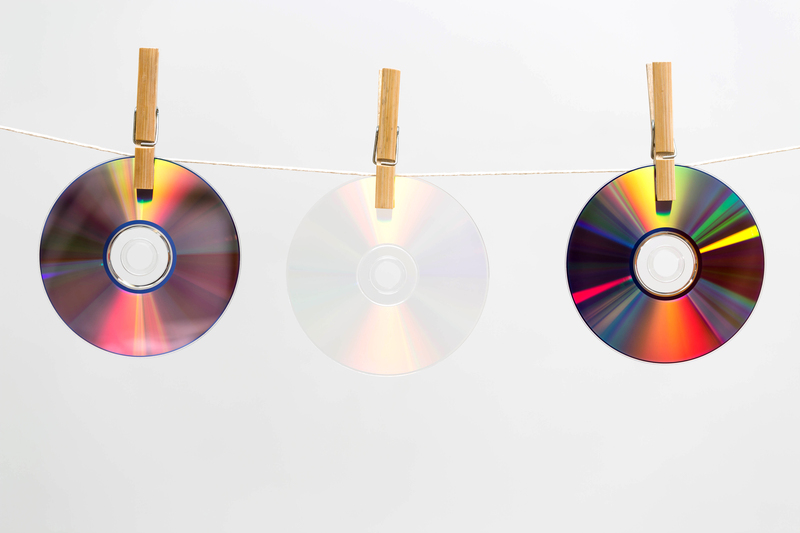Limit Microplastics from Laundry
Posted on 23/03/2025
As environmental concerns continue to rise, the focus on microplastics--tiny plastic particles less than 5mm in size--has intensified. While much attention is given to plastic waste from packaging and disposable products, microplastics generated from laundry processes often fly under the radar. These small particles shed from synthetic fabrics accumulate in our water systems, contributing to pollution and posing dangers to marine life and human health. This article delves into ways to limit microplastics from laundry, offering practical advice and effective solutions.
Understanding Microplastics: What Are They?
Microplastics are divided into two categories: primary and secondary. Primary microplastics are intentionally manufactured at microscopic sizes, often used in products like cosmetics and industrial processes. Secondary microplastics result from the degradation of larger plastic products. The microplastics generated through laundry fall into the latter category. When synthetic fabrics are washed, they release tiny plastic fibers known as microfibers, which enter wastewater and eventually flow into natural water bodies.

The Impact of Microplastics on the Environment
Research indicates that billions of microfibers are released from household laundry each year. These particles bypass many wastewater treatment systems and end up in rivers, lakes, and oceans. Marine organisms ingest these microplastics, mistaking them for food. Because plastics do not biodegrade, these particles accumulate in the organisms' bodies and often move up the food chain, ultimately affecting human health when seafood is consumed.
Moreover, microplastics serve as carriers for toxic chemicals in water, which adhere to their surfaces. When these particles are ingested by marine life, the chemicals can cause various health issues, further compounding the problem.
Simple Laundry Practices to Reduce Microplastics
Use a Microfiber Filter or Laundry Bag
Microfiber-catching laundry bags, such as the Guppyfriend, and filters can significantly reduce the release of microfibers. These specially designed bags capture the microfibers that shed from fabrics during the wash, preventing them from entering wastewater. Similarly, installing a lint filter in your washing machine can trap microfibers and other debris, effectively reducing the number of microplastics released.
Choose Natural Fibers
Opting for clothing made from natural fibers such as cotton, wool, and silk can dramatically decrease the release of microplastics. While these natural materials are generally more expensive, they have the added benefit of being biodegradable, alleviating the burden on water treatment systems and the environment.
Wash Less Frequently
Washing clothes less frequently can cut down the amount of microplastics released. Re-wearing items, particularly those that are not heavily soiled, and waiting until you have a full load before running the washing machine are simple yet effective practices. Frequent washing not only releases more microfibers but also wears out your clothes more quickly.
Advanced Techniques and Technologies
Employing Microfiber Filters in Washing Machines
Many new washing machine models come equipped with microfiber filters designed to capture microplastics. For those with older machines, aftermarket filters can be installed relatively easily. While these filters may require additional investment, they offer a highly effective way to capture microplastics before they enter the wastewater system.
Cold Water Washing
Washing clothes in cold water reduces the friction between fibers, thereby decreasing the amount of microplastics released. While this method may not be suitable for heavily stained or soiled clothes, it is generally effective for everyday laundry. Moreover, cold-water washing is energy-efficient, offering another environmental benefit.
Innovative Laundry Balls
Products such as the Cora Ball are designed to capture microfibers in the wash. These balls mimic the natural filtration system of coral reefs and can be a convenient addition to your laundry routine. Although they may not capture every single microfiber, when used in combination with other methods like microfiber filters or bags, they can significantly reduce microfiber pollution.
Consumer Awareness and Choices
Reading Clothing Labels
Consumers can make informed decisions by paying attention to clothing labels. Many manufacturers now indicate whether their products are made from synthetic or natural fibers. By prioritizing natural fibers, consumers can play a direct role in reducing microfiber pollution.
Supporting Sustainable Brands
Many clothing brands are now emphasizing sustainability by offering lines of clothing made from recycled materials or natural fibers. Supporting these brands not only reduces your microplastic footprint but also encourages the industry to adopt more eco-friendly practices.

Policy and Regulation: A Broader Perspective
While individual actions are crucial, legislation and policy changes are essential for large-scale impact. Governments and regulatory bodies are beginning to take notice of the issue of microplastics. For instance, the European Union has initiated studies to assess the impact of microplastics and is exploring regulatory measures to limit their release from textiles. Advocacy for similar measures globally can drive meaningful change.
Future Directions and Innovations
Research into new materials and technologies that minimize microfiber release is ongoing. Innovations such as biodegradable synthetic fabrics and enhanced wastewater treatment processes promise to offer additional solutions. Consumer demand for sustainable practices is likely to drive further advancements in this area.
In conclusion, addressing the issue of microplastics from laundry entails a multi-faceted approach encompassing consumer behavior, technological innovations, and regulatory measures. By adopting the practices discussed, individuals can significantly reduce their contribution to microfiber pollution, benefiting both the environment and human health.



